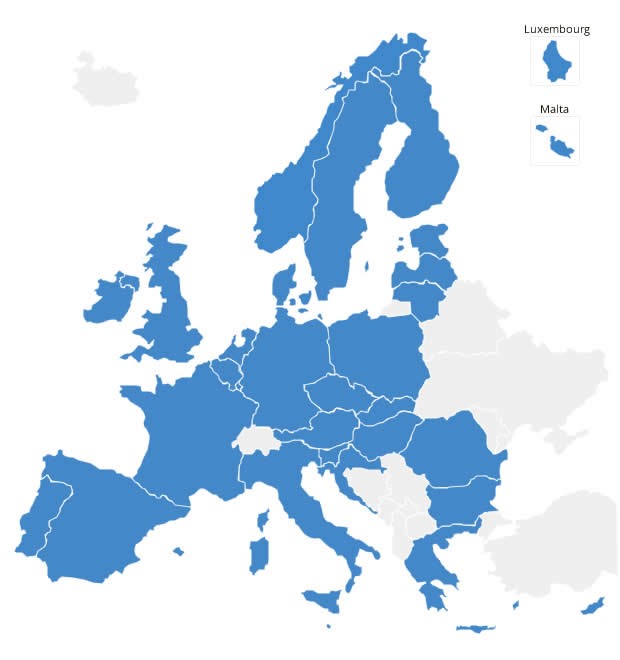Subscribe to InsuranceERM to benefit from:
- In-depth special reports and analysis
- Commentary and insight from leading industry specialists
- Discounts for InsuranceERM events
© Field Gibson Media Ltd 2024
Subscribe nowClick on each country to view Solvency II information on that country and a selected list of news and analysis.

Solvency II came into life on 1 January 2016, bringing major changes to how insurers in the European Economic Area manage risk and capital, and how they report on their business.
Firms can deviate from the core requirements by applying optional elements of the regulatory framework, such as internal models (IMs), undertaking specific parameters (USPs), the volatility adjustment (VA) and the matching adjustment (MA) – as well as transitional measures that smooth the introduction of Solvency II. These adjustments and measures impact the valuation of liabilities and own funds, with a consequent effect ؘ– usually positive – on the solvency capital ratio.
The interactive map on the left shows how many firms are using the optional elements and/or whether there is a high, medium or low take-up in each country.
Data on most of the adjustments and transitional measures comes from Eiopa’s December 2018 LTG report, which uses year-end 2017 figures. Use of IMs and USPs comes from Insurance Risk Data, the database service from InsuranceERM’s publisher, and is based on 2018 year-end information.
The information here is as complete and as accurate as we can make it, but we apologise for any errors or omissions. Please contact us if you have any comments or questions.
Last updated: 24 July 2019
Subscribe to InsuranceERM to benefit from:
© Field Gibson Media Ltd 2024
Subscribe now